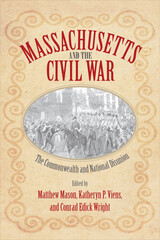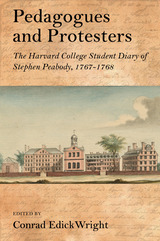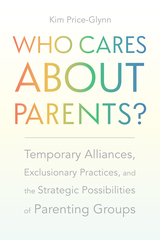3 books about Wright, Conrad Edick

Margaret Fuller and Her Circles
Brigitte Bailey
University of New Hampshire Press, 2013
These essays mark the maturation of scholarship on Margaret Fuller (1810–1850), one of the most important public intellectuals of the nineteenth century and a writer whose works have been much revived in recent decades. The authors—leading scholars of Fuller, Transcendentalism, and the antebellum period—consider anew Fuller the critic, the journalist, the reformer, the traveler, and the social and cultural observer, and make fresh contributions to the study of her life and work. Drawing on developments in gender theory, transatlantic studies, and archival excavations of the networks of reform, this volume defines Fuller as a significant intellectual precursor, a critic who analyzed and challenged the dominant interpretive paradigms of her own time and who remains strikingly relevant for ours.
[more]

Massachusetts and the Civil War
The Commonwealth and National Disunion
Matthew Mason
University of Massachusetts Press, 2015
All states are not created equal, at least not when it comes to their influence on American history. That assumption underlies Massachusetts and the Civil War. The volume's ten essays coalesce around the national significance of Massachusetts through the Civil War era, the ways in which the commonwealth reflected and even modeled the Union's precarious but real wartime unification, and the Bay State's postwar return to the schisms that predated the war. Rather than attempting to summarize every aspect of the state's contribution to the wartime Union, the collection focuses on what was distinctive about its influence during the great crisis of national unity.
In the first section, "The Opposition to Slavery," essays by John Stauffer, Dean Grodzins, Peter Wirzbicki, and Richard S. Newman demonstrate the central role Massachusetts played in the rise of both the antislavery movement and abolitionism. They show how slavery's foes united, planned, and understood their cause, and how they envisioned a postwar nation free of servitude. In the second section, "The War Years," Matthew Mason, Carol Bundy, and Ronald J. Zboray and Mary Saracino Zboray investigate how the exigencies of war unified the commonwealth across party lines and over the distance between home and the front. In the final section, "Reconciliation," Sarah J. Purcell, Amy Morsman, and Kanisorn Wongsrichanalai probe postwar efforts to recover from the war's profound disruptions.
In the first section, "The Opposition to Slavery," essays by John Stauffer, Dean Grodzins, Peter Wirzbicki, and Richard S. Newman demonstrate the central role Massachusetts played in the rise of both the antislavery movement and abolitionism. They show how slavery's foes united, planned, and understood their cause, and how they envisioned a postwar nation free of servitude. In the second section, "The War Years," Matthew Mason, Carol Bundy, and Ronald J. Zboray and Mary Saracino Zboray investigate how the exigencies of war unified the commonwealth across party lines and over the distance between home and the front. In the final section, "Reconciliation," Sarah J. Purcell, Amy Morsman, and Kanisorn Wongsrichanalai probe postwar efforts to recover from the war's profound disruptions.
[more]

Pedagogues and Protesters
The Harvard College Student Diary of Stephen Peabody, 1767-1768
Conrad Edick Wright
University of Massachusetts Press, 2017
On April 4, 1768, about one hundred angry Harvard College undergraduates, well over half the student body, left school and went home, in protest against new rules about class preparation. Their action constituted the largest student strike at any colonial American college. Many contemporaries found the cause trivial and the students' decision inexplicable, but in the undergraduates' own minds it was the culmination of months of tensions with the faculty.
Pedagogues and Protesters recounts the year in daily journal entries by Stephen Peabody, a member of the class of 1769. The best surviving account of colonial college life, Peabody's journal documents relationships among students, faculty members, and administrators, as well as the author's relationships with other segments of Massachusetts society. To a full transcription of the entries, Conrad Edick Wright adds detailed annotation and an introduction that focuses on the journal's revealing account of daily life at America's oldest college.
Published in association with Massachusetts Historical Society
Pedagogues and Protesters recounts the year in daily journal entries by Stephen Peabody, a member of the class of 1769. The best surviving account of colonial college life, Peabody's journal documents relationships among students, faculty members, and administrators, as well as the author's relationships with other segments of Massachusetts society. To a full transcription of the entries, Conrad Edick Wright adds detailed annotation and an introduction that focuses on the journal's revealing account of daily life at America's oldest college.
Published in association with Massachusetts Historical Society
[more]
READERS
Browse our collection.
PUBLISHERS
See BiblioVault's publisher services.
STUDENT SERVICES
Files for college accessibility offices.
UChicago Accessibility Resources
home | accessibility | search | about | contact us
BiblioVault ® 2001 - 2025
The University of Chicago Press









